Venugopala Swamy Temple In Mysore Is A Divine Oasis In The Heart Of Karnataka
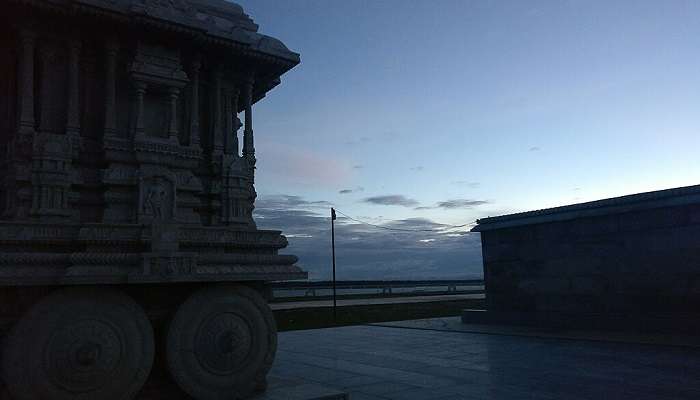
In the middle of the old city of Mysore, the Sri Venugopala Swamy Temple is a beautiful example of Karnataka’s rich history and amazing architecture. This ancient Hindu temple is dedicated to Lord Krishna. It shows off stunning craftsmanship and has a deep spiritual meaning, attracting many worshippers and visitors. The temple started in the 7th century but has been renovated and expanded many times over the years, making it even more magnificent and mysterious. When you enter the temple’s holy grounds, you feel peace and devotion all around you. Visiting the Venugopala Swamy Temple in Mysore is an exceptional experience you will always remember.
Venugopala Swamy Temple Mysore: An Overview
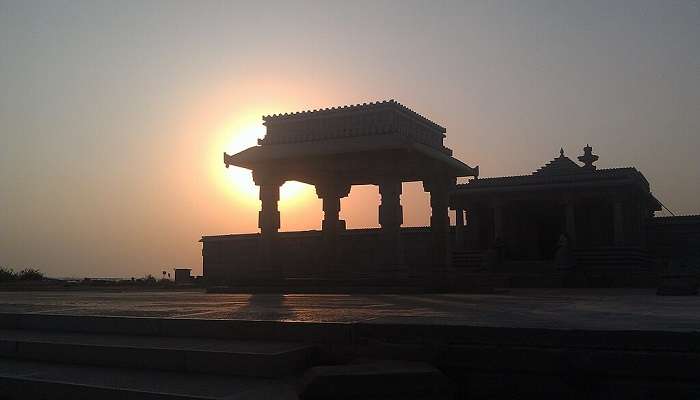
The Sri Venugopala Swamy Temple, a beautiful example of Hoysala architecture, resides near the Krishna Raja Sagara dam in Karnataka, India. Built in the 12th century AD, it shares a similar timeframe with the famed Chennakesava Temple at Somanathapura. This temple holds deep significance for devotees of Lord Krishna, enshrined here as Venugopalaswamy, the enchanting flute player.
The story of the Sri Venugopala Swamy Temple is unique. The Sri Venugopala Swamy Temple was originally in the village of Kannambadi, but the town was flooded when a dam was built. Amazingly, the temple reappears when the water level goes down during droughts, making people feel amazed and inspiring pilgrimages. Thankfully, there was a project to save the temple. The original stones were carefully recorded, photographed, and taken apart. Then, skilled workers put them back together on higher ground at Hosa Kannambadi. Today, the temple stands as a symbol of its historical importance and human determination.
Must Read: Ettumanoor Mahadevar Temple
Venugopala Swamy Temple Mysore History
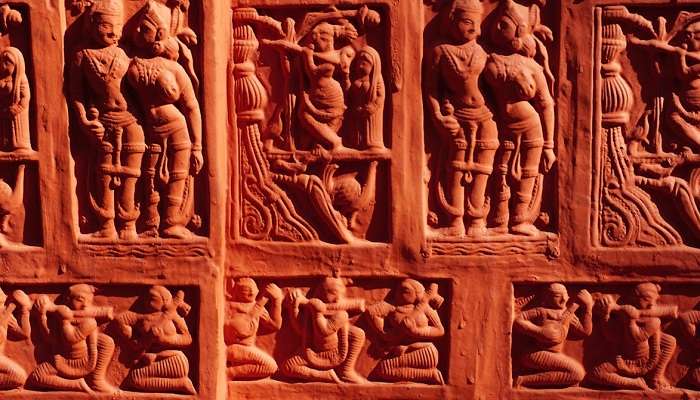
The Sri Venugopala Swamy Temple in Mysore is famous for its detailed carvings, telling a unique story. Built in the 12th century, the Hoysala architectural style is similar to the well-known Chennakesava Temple at Somanathapura. The temple’s history is one of resilience, surviving submersion and later restoration. Initially, the temple was located in the village of Kannambadi. In 1909, Sir M. Visvesvaraya planned the Krishna Raja Sagara (KRS) dam. This important project required flooding Kannambadi and nearby areas. The king of Mysore, Krishna Raja Wadiyar IV, ordered a new village to be built called Hosa Kannambadi, which means “New Kannambadi.”
While the people moved to their new homes, the Sri Venugopala Swamy Temple and two other temples faced a big problem. They had to be left behind as the rising water from the dam would cover them. For over 70 years, the Venugopala Swamy Temple stayed underwater, only appearing during droughts, like around the year 2000. The revival of the temple shows the strength of community efforts. Philanthropist Sri Hari Khoday and the Khoday Foundation knew the temple was essential and took on the challenge of moving and restoring it. They planned carefully, got the needed permissions, and worked hard to rebuild it exactly as it was.
Today, the Sri Venugopala Swamy Temple stands proudly in Hosa Kannambadi. It shows the dedication of its original builders and the community’s efforts to restore it. It reminds us of the Hoysala era’s rich cultural heritage and its devotees’ lasting faith.
Architecture And Design
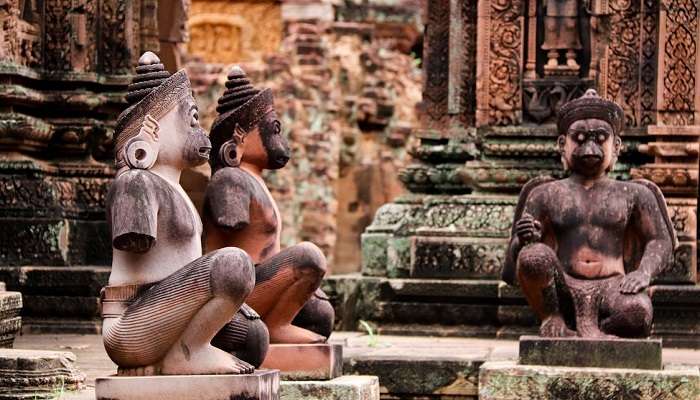
The Venugopala Swamy Temple is a special architectural gem from the Hoysala era (12th century AD) in Mysore, India. It stands out for its symmetrical design, enclosed by two courtyards (prakaras). Built around the same time as the famous Chennakesava Temple at Somanathapura, it shows the architectural brilliance of that time.
The entrance begins with an outer gate (Mahadwara) with pillared verandahs on both sides. Here, you might find spaces for rituals (yagasala) and a kitchen area. Stepping through this gateway, a second Mahadwara led you to the inner enclosure, mirroring the layout of the Somanathapura temple. At the heart of the temple lay the sanctum sanctorum (garbhagriha), the most sacred space. Here, enshrined within, the idol of Venugopala Swamy resided, a form of Lord Krishna depicted playing his flute as a cowherd. A vestibule likely preceded the garbhagriha, creating a transitional zone before reaching the most sacred chamber.
Continuing inwards, you would have entered a middle hall, followed by the main hall (mukhya mantapa). These halls would have served as congregational spaces for devotees to gather and participate in temple rituals. It’s possible that the walls and even the roof of these halls were adorned with intricate sculptures, a hallmark of Hoysala architecture.
Despite its unfortunate fate when the Krishnaraja Sagara Dam was constructed in 1930, the Venugopala Swamy Temple was not forgotten. A remarkable restoration project initiated in the early 2000s meticulously dismantled the temple complex, with each stone carefully numbered and documented. This dedication allowed the temple to be rebuilt at its current location in Hosa Kannambadi, which is a testament to the enduring legacy of the Hoysala era and the importance of preserving our historical heritage.
Suggested Read: Mannarasala Nagaraja Temple
Venugopala Swamy Temple Mysore Timings And Pooja Timings
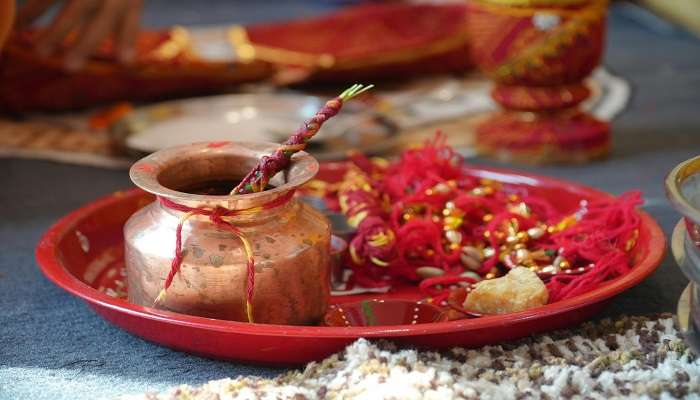
The Venugopala Swamy Temple in Mysore welcomes devotees daily. The Venugopala Swamy Temple Mysore timings follow a two-part schedule: mornings from 7:00 AM to noon and evenings from 6:00 PM to 8:30 PM. While there are no specific pooja timings throughout the day, it typically conducts a morning puja (Mangala Aarti) around sunrise, an abhisheka (sacred bathing) ceremony at a designated time, beautification rituals (Shringaar Aarti), an evening aarti (Sandhya Aarti) at sunset, and a closing aarti (Shayan Aarti) before the temple closes.
Best Time To Visit
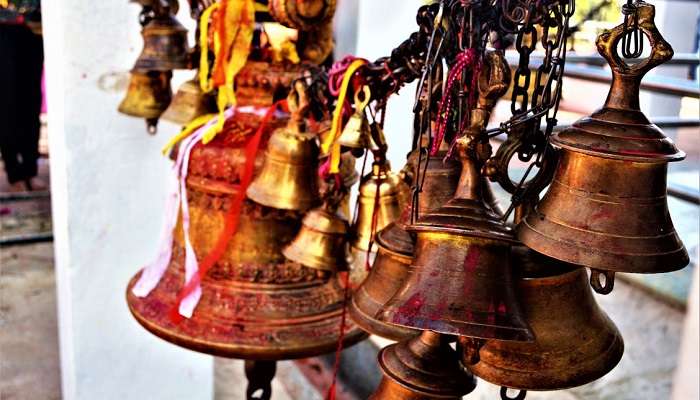
The best time to visit Mysore is from November to March. During these months, the weather is dry and sunny with comfortable temperatures. It’s best to avoid visiting in the hot summer (April to May) and the rainy season (June to September) when the temple surroundings can be slippery.
Suggested Read: Kom Ombo Temple
How To Reach

The Sri Venugopalaswamy Temple is located at Hosa Kannambadi, near Krishna Raja Sagara, about 9 km from Brindavan Gardens in Mysore. Below is how you can reach the temple:
By Air
The nearest airport is Mysore Airport, which is roughly 8 km away from the temple. Cabs and autos are readily available from the airport to reach the temple.
By Train
Mysore Junction railway station is the nearest major railway station, around 2 km from the temple. You can hire cabs and autos or take local buses from the station to the temple.
By Road
The temple is situated on Lakshmipuram Road in Mysore. If you’re travelling by bus, you can get off at the Mysore bus stand and take an auto or cab to the temple. The Mysore bus stand is well-connected to major cities in South India.
Things To Keep In Mind

Some things to keep in mind for a smooth and respectful visit are:
Temple Timings and Dress Code: The temple is generally open from dawn to dusk. As with most Hindu temples, dress modestly by covering your knees and shoulders.
Photography Rules: You can’t take pictures inside the temple, but you can snap photos of the outside and the pretty backwaters nearby. Signs remind you, and guards might remind you too.
Dress Code: In many South Indian temples, men should remove their shirts and dhotis (a long cloth around the waist) before entering.
Quiet Inside: Keep calm in the temple. Don’t be loud or use your phone.
Shoes: Leave your shoes outside on the racks. Wash your feet before going in.
Offerings: If you wish to make an offering, you can purchase puja kits or flowers from the vendors outside the temple complex.
Temple Etiquette: If you are unfamiliar with Hindu temple rituals, you can observe how others perform darshan (viewing the deity) and offerings. You can also seek guidance from the temple priests.
Respectful Behavior: Extend respect to all devotees and temple staff.
Further Read: Pre-Rup Temple
The Venugopala Swamy Temple is a beautiful example of Dravidian architecture and a must-see for anyone visiting Mysore. This ancient temple shows Karnataka’s rich cultural heritage. Whether you love history and architecture or want a peaceful spiritual experience, the Venugopala Swamy Temple will amaze you. If you’re impressed by the beautiful Venugopala Swamy Temple, why wait? Plan your trip to Mysore today and explore the impressive South Indian temples and traditions. Book your journey now and prepare to create cherished memories that will last a lifetime.
For our editorial codes of conduct and copyright disclaimer, please click here.
Cover Image Credit: Aishwarya Appanna for wikimedia commons
Frequently Asked Questions About Venugopala Swamy Temple In Mysore
What is the history of Venugopala Swamy Temple?
The Venugopala Swamy Temple is a 12th-century architectural gem built in the Hoysala style, similar to the Chennakesava Temple at Somanathapura. Originally located near the Krishna Raja Sagara (KRS) dam, the temple was submerged after the dam's construction in 1909. During droughts, the temple would resurface when water levels receded, becoming a local marvel. Due to public outcry, the temple was disassembled and meticulously rebuilt at its current location, Hosa Kannambadi, near the backwaters of the KRS dam, in the 1990s.
Which temple is inside the water in Mysore?
Technically, the Venugopala Swamy Temple was once inside the water in Mysore. While it's no longer submerged, the KRS dam's backwaters can reach the temple's outer walls at its maximum capacity.
What is the dress code for the Venugopala Swamy Temple?
There's no specific mention of a strict dress code for the Venugopala Swamy Temple. However, as with most Hindu temples, modest dress is recommended. This means covering shoulders and knees for both men and women.
Who is the god of Venugopala Swamy?
The Venugopala Swamy Temple is dedicated to Lord Vishnu in his form as Venugopala, which translates to 'the flute player.' This form depicts Lord Vishnu as Krishna, playing his iconic flute.
What to shop in Mysore?
Mysore itself is a shopper's paradise. The city caters to diverse tastes, from the famed Mysore silk sarees and sandalwood products to delectable Mysore Pak sweets and handcrafted toys. You can even find exquisite inlaid rosewood furniture and artefacts for a touch of Mysore's royalty in your home. This is just a glimpse of what Mysore offers, so explore and discover your shopping treasures.
People Also Read:
Koneswaram Temple Talakaveri Temple Manikavu Temple

Get ready to wander the world through amazing visual tours that we provide via our blogs and stories. As a content writer, I love sharing incredible travel experiences that inspire readers to plan their own adventures and create unforgettable memories. From planning to execution, everything has already been served in these amusing tales. Let’s explore the world together, one destination at a time!











